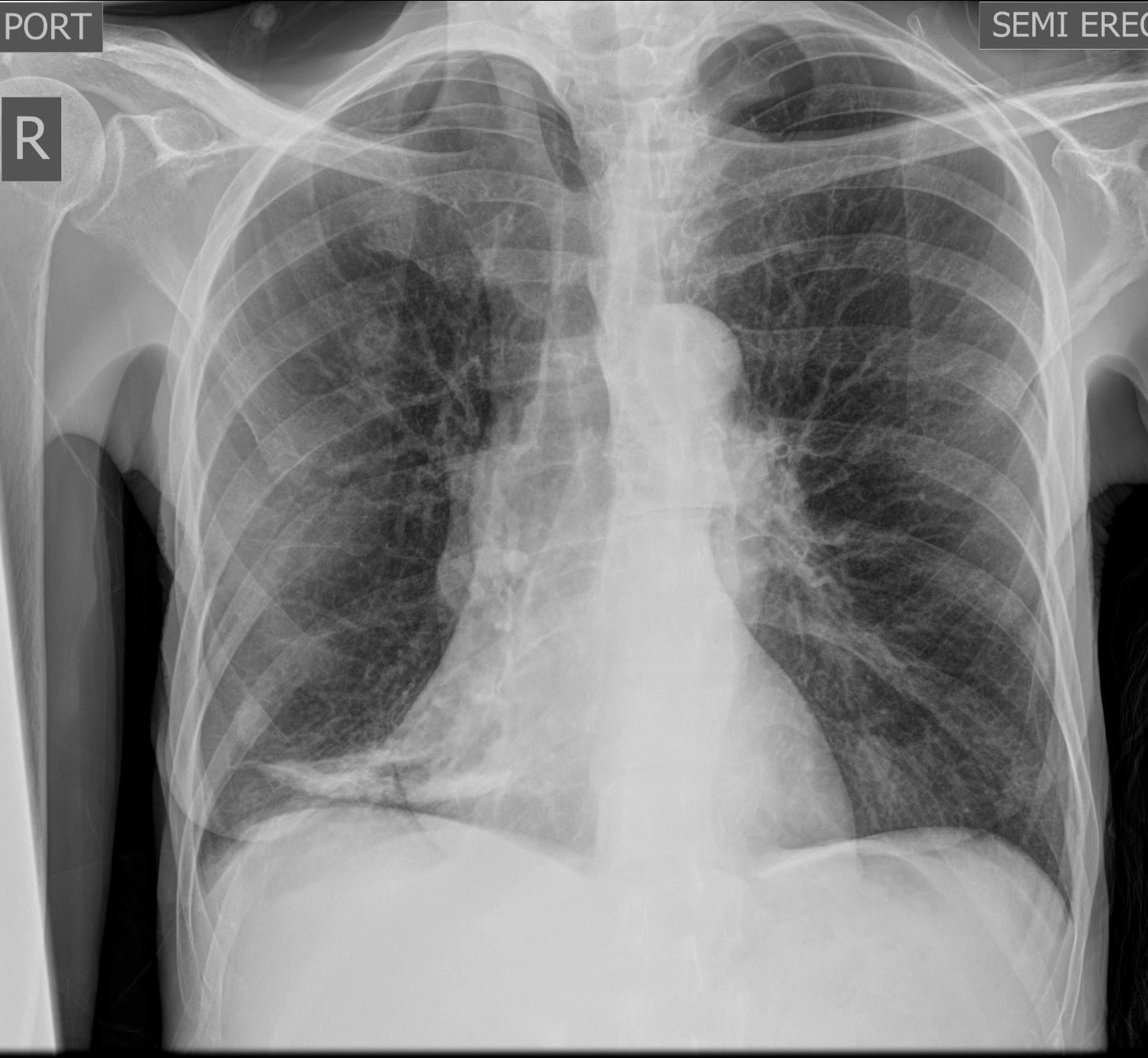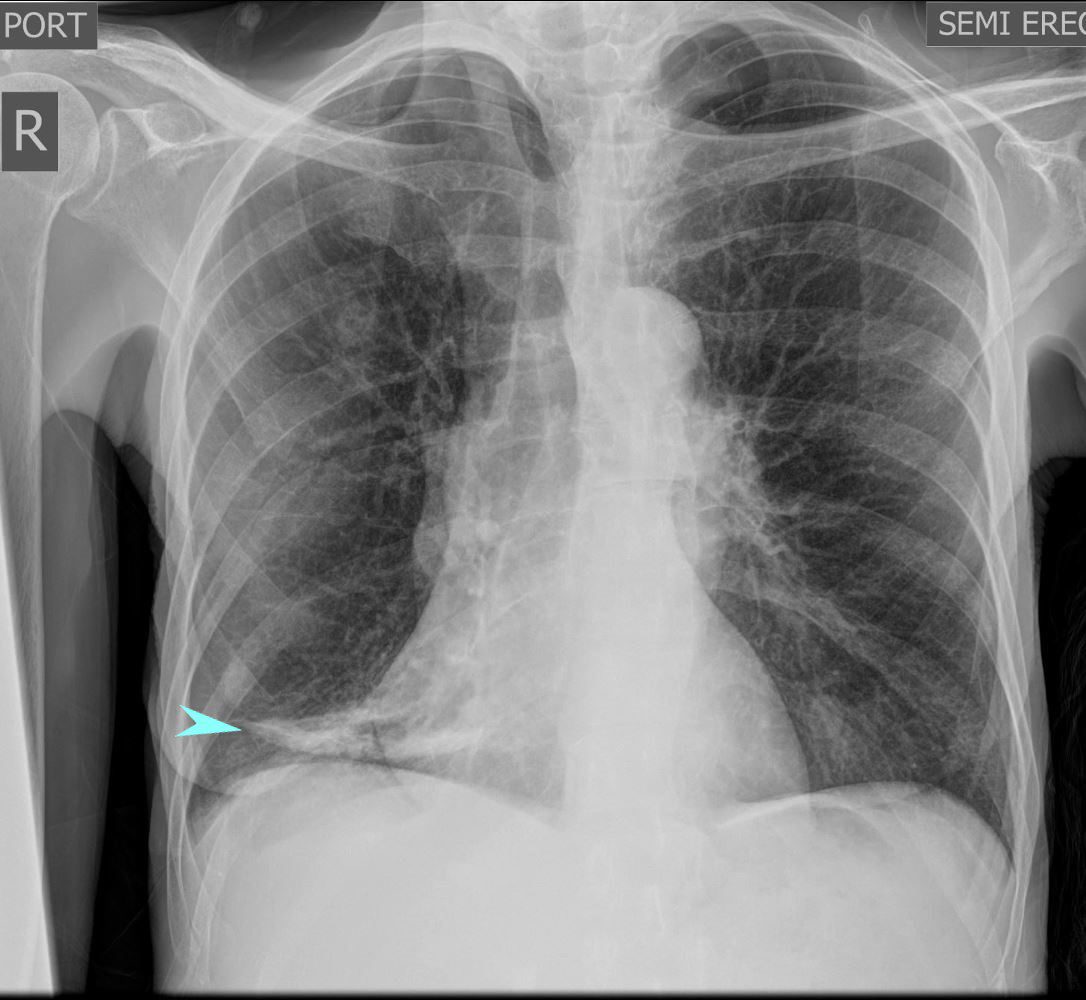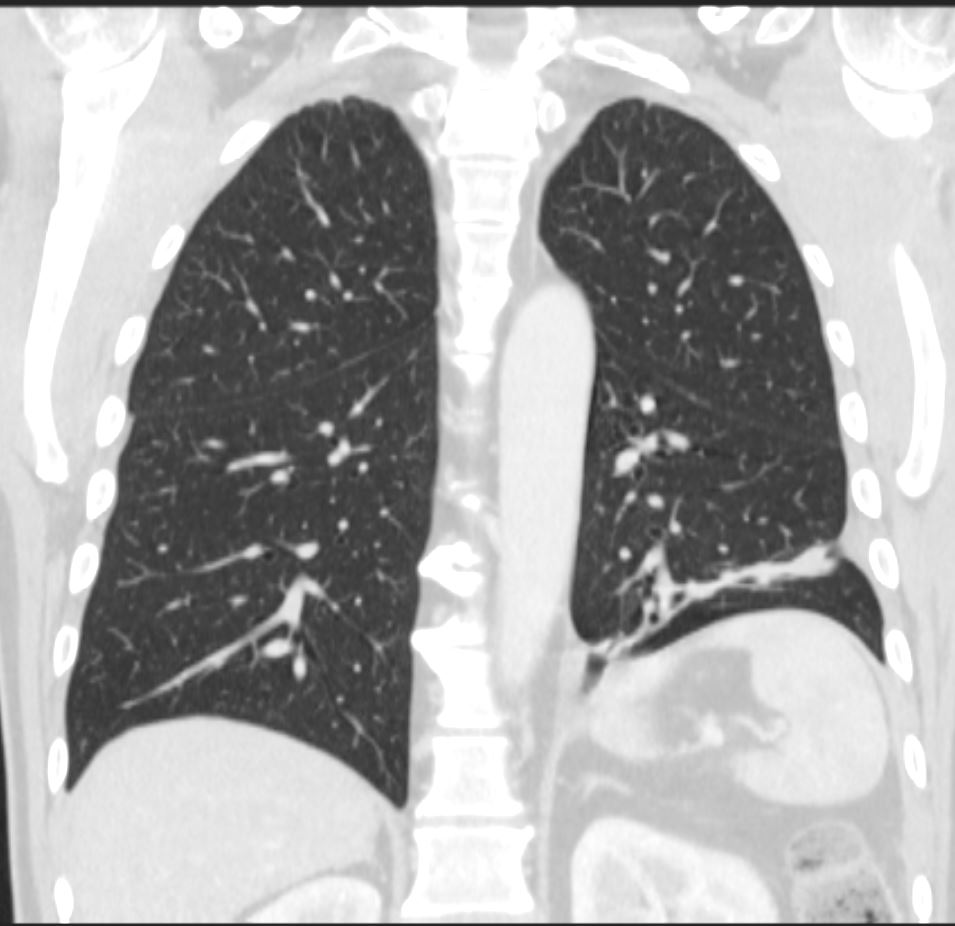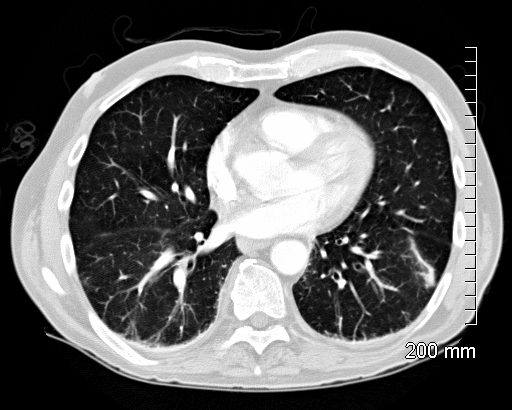Linear or discoid atelectasis, also known as plate atelectasis,
Linear atelectasis refers to a localized, thin, band-like area of lung collapse seen on imaging, usually caused by incomplete alveolar expansion. It is a non-specific finding often associated with transient or mild conditions such as hypoventilation, shallow breathing, or small airway obstruction. Linear atelectasis typically involves the subpleural region and can occur in any lobe of the lung.
Radiological Features
- Chest X-Ray (CXR):
- Appearance:
- A thin, linear opacity oriented parallel to the pleural surface or radiating from the hilum.
- Location:
- Commonly found in the lung bases.
- Volume Loss:
- Subtle findings, such as mild diaphragmatic elevation or adjacent rib crowding.
- Appearance:
- CT (High-Resolution CT – HRCT):
- Appearance:
- Thin, linear opacities, often in the subpleural space.
- May be isolated or extend along fissures (e.g., subsegmental atelectasis).
- Associated Findings:
- Minimal or no significant volume loss.
- Possible adjacent ground-glass opacities (e.g., in post-operative or inflammatory settings).
- Normal surrounding lung parenchyma.
- Appearance:
Common Causes
- Post-Surgical or Post-Anesthetic Hypoventilation:
- Caused by shallow breathing or inactivity after surgery.
- Prolonged Recumbency:
- Common in bedridden patients due to gravity-dependent compression.
- Airway Obstruction:
- Caused by mucus plugs, small airway narrowing, or external compression.
- Inflammatory Conditions:
- Occurs in infections or inflammatory diseases like pneumonia or ARDS.
- Fibrotic Changes:
- Linear atelectasis can persist in chronic conditions due to scarring.
- Pleural Disease:
- Adjacent pleural effusion or thickening can contribute to local atelectasis.
Differential Diagnosis
Linear atelectasis should be differentiated from other linear or band-like radiological findings:
- Fibrosis:
- Appears thicker, irregular, and may be associated with traction bronchiectasis.
- Scarring:
- May have associated architectural distortion and chronic volume loss.
- Pleural Plaques:
- Dense, well-defined plaques, often calcified, without volume loss.
Clinical Relevance
- Linear atelectasis is typically benign and resolves with deep breathing exercises or treatment of the underlying cause (e.g., airway clearance).
- Persistent linear atelectasis may warrant further evaluation to exclude chronic conditions like fibrosis or recurrent aspiration.

Frontal Chest Xray of a 55-year-old female shows a region of discoid atelectasis (aka linear atelectasis plate atelectasis ) in the right lower lung zone
Courtesy Ashley Davidoff MD TheCommonVein.net 136548

Frontal Chest Xray of a 55-year-old female shows a region of discoid atelectasis (aka linear atelectasis plate atelectasis ) in the right lower lung zone (teal arrow)
Courtesy Ashley Davidoff MD TheCommonVein.net 136548

CT scan in the coronal plane 3 months later shows significant improvement of the atelectasis involving a basal segment of the left lower lobe associated with persistent elevation of the left hemidiaphragm indicating volume loss. The atelectasis now has a discoid, linear, or plate-like appearance
Ashley Davidoff MD TheCommonVein.net 276Lu 136238
aka discoid atelectasis aka plate-like atelectasis

66 year old male with linear (discoid) atelectasis in the left lower lobe on CT
Ashley Davidoff MD TheCommonVein.net

60 year old male with linear (discoid) atelectasis in the middle lobe and the left upper lobe on CT. Note moderate sized bilateral pleural effusion. Minor compressive atelectasis caused by the left effusion.
Ashley Davidoff MD TheCommonVein.net

66 year old male with linear (discoid) atelectasis in the left lower lobe on CT
Ashley Davidoff MD TheCommonVein.net
Radiographic Appearance
- Linear Opacity: Appears as a thin, straight or slightly curvilinear band of increased density, usually 1?3 cm wide.
- Location: Often seen in the lower lobes of the lungs, particularly along the costophrenic angles.
- Orientation: Usually parallel to the pleural surface, often horizontal or oblique in alignment.
Common Causes
Linear or discoid atelectasis can result from various factors that cause localized alveolar collapse, including:
- Hypoventilation: Commonly occurs post-operatively or in patients with prolonged bed rest.
- Shallow Breathing: Seen in patients with pleuritic pain, rib fractures, or abdominal discomfort, as these conditions limit deep inspiration.
- Obstruction: Mucus plugging in smaller airways can cause localized atelectasis.
- Compression: External pressure from pleural effusion, a mass, or pneumothorax can collapse nearby alveoli.
Clinical Significance
Linear or discoid atelectasis is generally a benign finding and often transient. It does not usually indicate significant pathology, although it can sometimes be a marker of poor ventilation or underlying lung disease. It is important to differentiate it from more concerning findings, such as infiltrates or fibrotic bands, which may indicate chronic or progressive disease.
Summary
In radiographic terms, linear or discoid atelectasis is a thin, linear opacity representing areas of localized alveolar collapse, often due to hypoventilation or compression, and is typically a temporary and benign finding.
Links and References
Chat GPT – What is radiographic definition of linear or discoid atelectasis?
